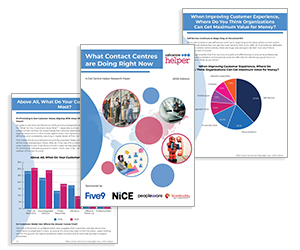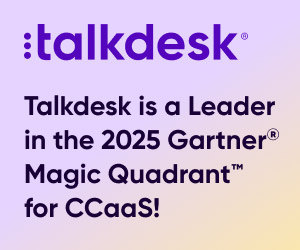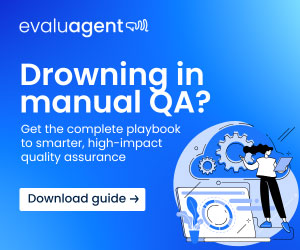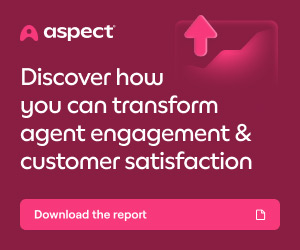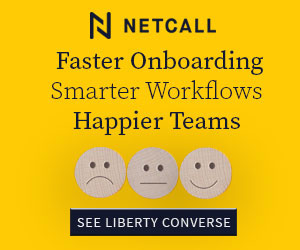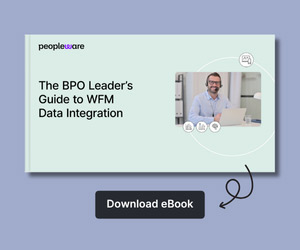This blog summarizes the key points from a recent article from David McGeough at Scorebuddy, where he shows how to build a data-driven recruiting strategy, avoid common mistakes, and turn your QA program into a competitive hiring advantage.
Hiring the right call centre agents is critical. The wrong hires lead to low customer satisfaction, high turnover, and wasted training time. And with agent attrition at nearly 60%, there’s no room for guesswork.
The good news? You already have a powerful tool at your fingertips: your QA data.
By using insights from real performance data, you can improve hiring decisions, lower turnover, and bring in agents who are set up to succeed.
7 Steps to Building a Smarter Call Centre Hiring Strategy
1. Define Top Agent Profiles With QA Insights
Your best performers hold the key to smarter hiring. Dive into your QA scores, call metrics, and team leader feedback to identify what makes your top agents stand out. Use this to create specific, role-based hiring profiles.
Focus on traits like:
- Response speed
- Accuracy
- Emotional intelligence
- Adherence to scripts
Example: Sales agents might need confidence and closing skills, while service reps thrive with empathy and patience.
Just like marketers build buyer personas, you should create agent personas to guide hiring decisions. Let QA trends inform interview questions and skill assessments for a focused, performance-aligned recruiting process.
2. Attract Talent With a Strong Employer Brand
Your brand matters to job seekers. A polished, people-first image can help you stand out to the best candidates – before they ever apply.
The Job Seeker Nation Report found that:
- 52% want career advancement
- 32% prioritize company culture
- 39% left jobs within 90 days due to poor culture
- 25% left because of limited growth opportunities
Highlight what makes your workplace different: career growth, supportive culture, competitive pay. Make sure job ads, careers pages, and social channels reflect this to draw in candidates who value long-term opportunity.
3. Write Job Descriptions That Work
Clear, targeted job postings lead to better-fit applicants. Follow a template to stay consistent:
- Accurate job title
- Brief intro to the company and role
- Bullet points for responsibilities
- Required vs. preferred qualifications
- Work structure: on-site, hybrid, or remote
- Compensation and perks
- How performance will be evaluated
- Career development opportunities
- Simple, clear application steps
Each post should reflect the expectations and values of your team while remaining easy to understand.
4. Use the Right Mix of Recruiting Channels
Your recruitment strategy should be tailored to each role. Internal referrals and niche job boards can produce great results, while staffing firms help scale when needed.
For example, outbound sales roles may benefit from platforms geared toward high-energy, performance-driven candidates, while inbound support may be better sourced through customer service communities.
Even when using external recruiters, keep strategy in-house. Provide them with QA-based profiles to help them screen more effectively.
5. Streamline the Hiring Process
Speed and consistency are essential in a competitive hiring environment. Use structured interviews and simulations to objectively assess candidates.
Tie performance during hiring tasks directly to your existing QA scorecards. This ensures alignment with on-the-job expectations and builds a reliable, repeatable process for hiring.
This approach removes bias and accelerates time-to-hire while keeping quality standards high.
6. Use Role-Specific Scenarios to Evaluate Fit
Beyond interviews, use practical exercises to see how applicants respond in real-world situations. Create simulations based on:
- Conflict resolution
- Upselling or cross-selling
- Troubleshooting support
Design each scenario around the needs of the role. Score each candidate using QA benchmarks, helping you identify not only top talent but the right talent for your team.
7. Make Recruitment Collaborative Across Teams
Hiring works best when it’s a team sport. Connect recruiting with QA, training, and operations to create a holistic view of candidate success.
Frontline leaders know what success looks like. Involve them in refining job descriptions, designing assessments, and evaluating candidates.
This cross-functional collaboration makes hiring smarter, faster, and more aligned with your customer experience goals.
Interview Questions That Reveal More Than Just Answers
Great questions dig deeper into how a candidate thinks, reacts, and solves problems. Start with these examples:
- Share a time you calmed an upset customer.
- How do you stay effective during busy periods?
- What does “excellent service” mean to you?
- Walk me through how you learn new tools.
- How do you stay composed under pressure?
- How do you ensure accuracy in fast-paced settings?
Common Call Centre Hiring Pitfalls to Avoid
Even with a solid plan, there are traps to watch for:
- Going with your gut: Rely on QA data over instinct.
- Speed over quality: Filling roles fast can lead to high turnover.
- Outsourcing everything: Keep strategy and oversight internal.
- Skipping supervisor input: Their insights are critical.
- Generic interviews: Customize by role.
- Ignoring soft skills: Empathy and adaptability matter.
- Poor onboarding: Even great hires need support.
- No feedback loop: Tie hiring back to post-hire performance.
Why QA Data Should Guide Your Hiring Strategy
QA data isn’t just for coaching – it’s a roadmap for smarter recruiting. By analysing scorecards, you’ll uncover what really drives success in each role. Use that data to shape interview guides, simulations, and even onboarding.
With AI-enhanced QA tools, you can analyse every customer interaction and gain a complete picture of what excellence looks like-at scale.
QA trends also help track new hire performance, allowing you to fine-tune hiring strategies based on real outcomes, not assumptions.
Your Call Centre Hiring Strategy Shapes the Entire CX
Your agents are the face of your brand. Hiring strategically isn’t optional – it’s the first step toward delivering memorable, effective customer service.
Start with the data you already have. Collaborate across teams. Build job postings and assessments that reflect your brand and business goals.
And don’t forget: soft skills are often what set great agents apart. Check out our call centre Soft Skills eBook to learn how to identify and develop these crucial capabilities.
This blog post has been re-published by kind permission of Scorebuddy – View the Original Article
For more information about Scorebuddy - visit the Scorebuddy Website
Call Centre Helper is not responsible for the content of these guest blog posts. The opinions expressed in this article are those of the author, and do not necessarily reflect those of Call Centre Helper.
Author: Scorebuddy
Reviewed by: Jo Robinson
Published On: 29th Jul 2025 - Last modified: 30th Jul 2025
Read more about - Guest Blogs, David McGeough, Scorebuddy






 Scorebuddy is quality assurance solution for scoring customer service calls, emails and web chat. It is a dedicated, stand-alone staff scoring system based in the cloud, requiring no integration.
Scorebuddy is quality assurance solution for scoring customer service calls, emails and web chat. It is a dedicated, stand-alone staff scoring system based in the cloud, requiring no integration. 




